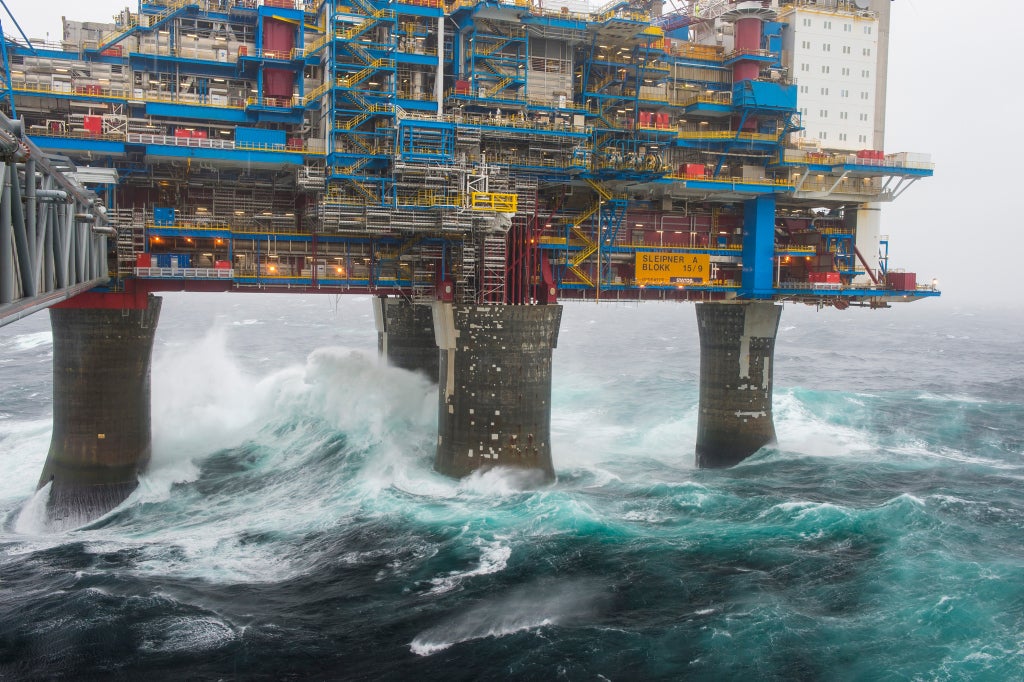
Unexpected subsurface challenges encountered by Norway’s flagship carbon capture and storage (CCS) projects, Sleipner and Snøhvit, cast doubt on the feasibility of burying CO₂ at large scale, suggests a recent report from the Institute for Energy Economics and Financial Analysis (IEEFA). The research highlights the ongoing risks associated with CCS, says the think tank.
Grant Hauber, the report’s author, explained in a press release that the unique geology of a project site can present unforeseen hurdles that may undermine CCS plans. Storage conditions at Snøhvit began deviating dramatically from design plans only about 18 months into CO₂ injections, necessitating major interventions and investments. In the case of Sleipner, CO₂ moved into an area previously unidentified by engineers despite extensive study of the subsurface geology.

Discover B2B Marketing That Performs
Combine business intelligence and editorial excellence to reach engaged professionals across 36 leading media platforms.
“While the oil and gas industry is used to dealing with uncertainty in exploration and production, the risks multiply when trying to place something like CO₂ back in the ground,” Hauber said. The CCS experiences at Sleipner and Snøhvit in Norway raise concerns about the technical capabilities, strength of regulatory oversight and long-term commitment required to effectively sequester CO₂ below the seabed. New CCS projects seek to deposit CO₂ underground at rates exceeding ten times those of Sleipner and Snøhvit, he added.
More than 200 CCS and carbon capture, utilisation and storage (CCUS) proposals are under consideration globally, IEEFA notes. Their proponents have often held up Sleipner and Snøhvit as proof that the technology can work. Both have sequestered their intended annual CO₂ deposit volumes, since 1996 for Sleipner and since 2008 for Snøhvit (storing about 22 million tonnes of CO₂ between them so far). IEEFA says totals do not indicate the challenges of getting the CO₂ into the ground and keeping it there.
Even if all currently proposed CCUS projects were to proceed and deliver as planned, they would still fall short of meeting the required volumes in net-zero scenarios, notes Margriet Kuijper, a consultant with nine years of prior experience in CCS projects at Shell. Kuijper raises concerns over the increasing criticism of CCS.
IEEFA's reports demonstrate a lack of expertise in subsurface exploration and production, geology and related fields, Kuijper says. They are written by individuals with backgrounds in accounting or civil engineering, who are accustomed to deterministic calculations and a high degree of statistical certainty, she explains. Hauber is originally a civil engineer who has since worked as an energy project developer as well as in energy project finance.

US Tariffs are shifting - will you react or anticipate?
Don’t let policy changes catch you off guard. Stay proactive with real-time data and expert analysis.
By GlobalDataKuijper suggests that a statement like "every project site has unique geology" is a trivial observation rather than a valuable insight.
She contests that the risks associated with CCS are necessarily multiplied compared with those encountered in oil and gas exploration and production. The industry's extensive experience in injecting gases and liquids into the subsurface means the risks associated with CO₂ storage are manageable for it, she argues.
Risk inherently involves assessing both the probability of an event and its potential consequences, she adds. IEEFA’s claim in its report on CCS in Norway that "subsurface CO₂ storage is an amalgamation of probabilities and risks" reflects a lack of understanding of this basic risk management principle, she alleges.
In response to concerns about the economic viability of CCS projects, Kuijper urges critics to support the implementation of a Carbon Takeback Obligation. This is the burgeoning idea of forcing fossil fuel producers to “take back” the carbon they emit and pay for its disposal. She believes that mandatory CO₂ storage regulations could address the issue of who bears the financial responsibility for CCS.
The European Commission is currently consulting on a new CCS strategy, or “industrial carbon management strategy”, due for publication this autumn. However, stakeholders worry it may be rolled over into next year. A total of 38 organisations wrote to the European Commission last week to call for its publication in 2023.





